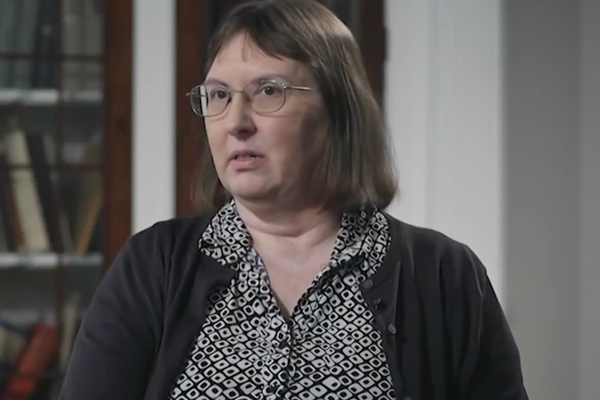
In the mid 1980s, the Mermaid – a dilapidated pub in Birmingham – was ground zero for grindcore, crust punk and an eclectic crowd of hunt saboteurs, hardline anarchists and underage punks fuelled by cheap scrumpy, magic mushrooms and gigs so loud plaster would rain from the ceiling.
Situated in Sparkhill, a working-class area three miles south from the city centre, the Mermaid quickly established itself as a DIY focus, with a diehard crowd travelling from far afield to sell fanzines, trade tapes and put on cheap punk and metal all-dayers upstairs. Gifted with legendarily laidback landlords – not to mention a crew of mercifully nonplussed local drinkers in the downstairs bar – it was unique, and is now the subject of a four-part podcast and publication by Brummie social historians Home of Metal.
“It was so accepting,” says former regular Matthew Knight. “The 80s was a pretty vile time; the right were on the rise, racism was rife, but here was this place you could go where everyone was vegetarian and into Crass,” he laughs. “Nobody was sexist or racist. It was a little oasis.”
Lisa Meyer, the director of Home of Metal as well as Birmingham’s Supersonic festival, was initially inspired to document the story of the Mermaid after hearing enthusiastic stories from the likes of Justin Broadrick (Godflesh) and Nicholas Bullen (Napalm Death) after gigs at Supersonic. “We’d always asked the question: why did this music – Black Sabbath and Judas Priest and Napalm Death and Godflesh, say – come from this region?” After doing a 2011 exhibition focused on Napalm Death, fanzines and the scene’s politics, it became evident that the Mermaid was “the antithesis of Judas Priest’s theatrics and stage costumes. Bands were literally playing on the floor – there was no stage.”

Hosting a wide array of bands from anarcho-punk legends such as Conflict and Antisect through to old school names such as UK Subs and American bands including Swans and Circle Jerks, the Mermaid was initially known for its unwavering support of underground punk. Talking to regulars and bands who frequently included the pub on their tour schedules, the idea of community came up time and again. Crust punk mainstays Amebix regularly toured there, as guitarist Stig Miller fondly remembers.
“A place like the Mermaid couldn’t exist in the present time,” he says. “By modern standards it would be considered a dump. They didn’t bother with things like fire regulations or having working toilets … sometimes when we were playing there the floor would be bowing and I thought we’d all end up falling through to the downstairs bar. But what an atmosphere: fantastic, DIY, real punk rock.”

Miller describes a febrile atmosphere where boundaries between performers and crowd were all but obliterated. “Everyone there was doing something, whether it was selling a fanzine or organising a gig, doing a band, running a label. There weren’t really any civilians in that sense. It was a very creative time.”
Though the Mermaid was known for its stellar support of punk rock it was the combination of the most ferocious metal with the DIY ethics of punk that gave birth to the band most closely associated with the pub: the godfathers of grindcore, Napalm Death. Often dubbed the unofficial house band of the Mermaid, Napalm Death combined guttural vocals with lightning fast blast beats on (very) short songs. Fast and furiously heavy, this was as extreme as metal got.
Former band member and longtime Godflesh guitarist and vocalist Justin Broadrick recalls the band’s early days as feeling “like a kids’ band. Drunk teenagers. The average age was 14-16. We were going through our early teenage years, and we all know what that’s like [laughs]. By the time Mick [Harris, drummer] joined and we sped up all the songs, people started to take us more seriously. They were coming not just to see us support the UK Subs, they were actually coming to see us as well. It dawned on us that we were doing something that people were actually interested in – even if we were teenagers drinking and doing whatever cheap drugs.”
Although the Mermaid was fuelled by booze and psychedelics there was also a more serious aspect at play. Hunt saboteurs organised there, using the pub as a base before going out on meetings. “You’d go there Saturday morning at God knows what time,” explains Matthew Knight, “get in the van and you’d end up in the Worcestershire country side, running around chasing people in red coats. It was a beacon of resistance.”

It was also a beacon of endurance. A notorious gig by Swans – an American band infamous for their rib-crushing volume – nearly took the roof off. Julie Barton was a regular attendee who was there on the night, aptly the same night as the 1987 hurricane.
“It was all calm on the way in and then Swans came on. I remember seeing them loading the kit in. I’d never seen a PA that size. As the noise intensified people started moving to the back of the room. I remember standing with my back against the wall. There was a corridor that led into where the gigs were and people were watching from the corridor for safety. There was plaster falling off the celling. I remember looking down at my pint and my cider was moving like Jurassic Park [laughs]. I’ve never felt that feeling of bass, just going through your body, into your stomach. My chest was vibrating. And then walking out afterwards there was rubbish blowing down the street and the trees were bending.”
Other gigs were equally tumultuous. Broadrick remembers notorious power electronics outfit Whitehouse playing regularly in the early 80s, “bringing a whole crew with them who’d stand at the back and try to corral everyone into seats at the front – there were no seats by the time we were in Napalm Death, they’d all been destroyed – in order to be tortured by Whitehouse, while the crew would stand at the back and hurl glasses over the top of the audience to land behind the band. That gig was the only time I ever saw the landlord. He got [Whitehouse vocalist] William Bennett in a headlock. A state of total carnage.”
But if you could dodge the odd hurled glass, the Mermaid could change your life. Long friendships were forged, and even as bands came and went, the enduring power of DIY ethics endured. “It was almost like a year zero for us,” explains Knight. “You met people there and you developed political thinking. It was a way of life, of effecting change. For pretty much everybody who went to The Mermaid who I’m still in contact with, we took that on in our own lives – it wasn’t about standing at barricades throwing rocks at the police, it was about how we interact at work, how we interact in relationships, how we raise our children. It was like a university, a grounding.”







